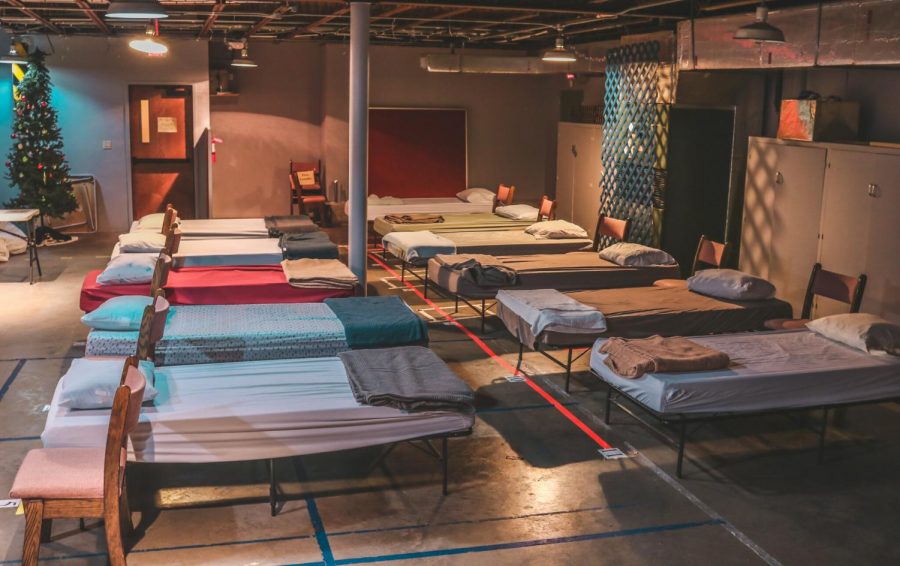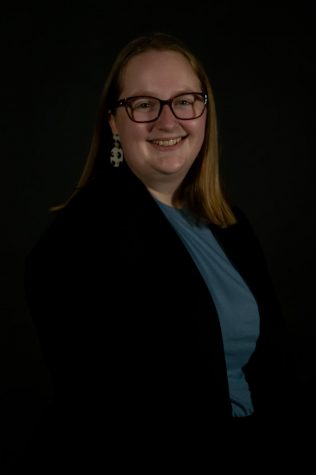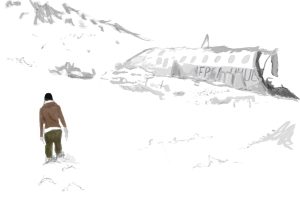Learning more about the Winona Community Warming Center
Winona Community Warming Center opens its doors from November to March to anyone in need of temporary shelter. The center offers guests a place to sleep, shower, and make food. Guests can find the Winona Community Warming Center by going to the alley behind the Community Bible Church in downtown Winona.
February 5, 2020
Winona is a city of about 27,000 people. At the end of each day, most clock out at work, travel home, fill up a dinner plate and crawl into a nice, warm bed.
But that is not an option for everyone who resides here.
Thankfully, the basement of Community Bible Church, located on 69 E Third Street, provides the adult homeless population of Winona with a refuge: the Winona Community Warming Center.
Open from Nov. 1- March 1, the center is currently in its fourth season and is run entirely by volunteers.
The first three seasons of the center, which started in 2016, only had zoning for 10 beds. Although the center averages 8-10 people a night, increased zoning approvals allowed the center to double their capacity with 20 beds this season.
There’s space for people to eat meals in the lounge, two showers and three bathrooms for personal care routines and on-site laundry.
Sponsored by the Catholic Charities of Southern Minnesota (CCOSM) agency, the Winona Warming Center is just one of the 17 initiatives that the agency supports.
The agency also opened a Rochester location in December 2019. Before that, the homeless population in Rochester would have had to come to Winona’s center for the night.
Lynette Johnson, outreach coordinator for the center, talked about her personal involvement.
“As the outreach coordinator, I do a lot of presentations and public relations for the center. I’m always working to educate the community on what we do,” Johnson said.
One of the biggest components of her presentations is informing people on how they can help at the center.
“As our name has grown, more interest in what we do has come with it,” Johnson said.
Some of the best ways to help, according to Johnson, are to donate winter gear like hats, gloves and coats.
Another way people can help is donating money to specific projects, like construction and renovation, or donating home-cooked meals.
Because the center is primarily an overnight resource for the homeless, volunteer shifts are from 9 p.m.-2 a.m. followed by a 2-7 a.m. shift.
The center is open for check-ins from 9 -10 p.m.; after that, the doors lock for the evening.
The guests are also able to lock up personal belongings in a room monitored by the night staff.
However, Johnson mentioned that guests may choose to leave at any time, with the stipulation that once they leave for the night, there is no reentry.
With a staff of four night-managers who rotate through shifts, the center also requires two nightly volunteers in order to open.
Julia Massmann, a first-time volunteer and Winona State senior, said she’s always been impacted by the idea of people not having somewhere to turn in the cold, Minnesota winters.
“Volunteering at the center allowed me to make a small, positive impact,” Massmann said.
Massmann decided to be a solo volunteer, but it is not uncommon for church service groups, college clubs and even senior citizens to volunteer for a shift at the center, according to Johnson.
Massmann described her time at the center as ‘relaxed, yet rewarding.’ She took the 2 a.m.-7 a.m. shift, so most of her interactions came from guests during breakfast time.
While the warm bed, hot meal and other amenities of the center are seen as the clear benefit to the homeless population, Massmann expressed what the most rewarding part of the experience was to her.
“I got a chance to visit with an individual and hear his life story. It was impactful to put a face and story to a situation that a lot of us don’t have an understanding of.”
She was thanked for being there by the individual and told that even though other guests might not say it, they’re also ‘deeply grateful’ for her time.
Massmann said she overall planned to volunteer again and saw the center as an “easy way to carve out time for school while making a positive impact on the community.”
Johnson mentioned that, above all else, the center is a resource for people to be shown compassion in times of struggle by those who are more fortunate.
The opinions expressed in this paper are not necessarily those of Winona State University, the Minnesota State Colleges and University system, or the Winona State University student body.



































